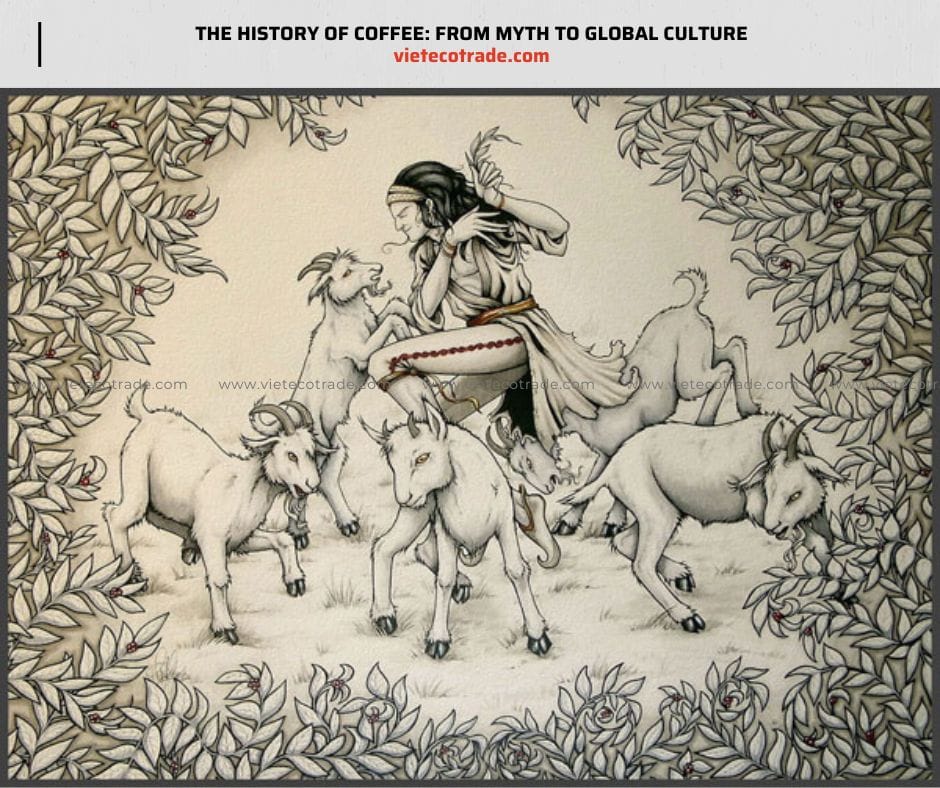Coffee is not only one of the most widely consumed beverages in the world, but also an integral part of global culture, religion, art, and economy. Its journey began in the highlands of Ethiopia, spread to the Arab world, Europe, and the Americas, and eventually evolved into a multibillion-dollar industry. Amidst that journey, Vietnam has emerged as one of the world's leading coffee exporters. Let VietEcoTrade take you through the fascinating and dynamic history of coffee.
I. Coffee in Ancient Times
Around 800 BC:
- Coffee was discovered in what is now Ethiopia. A popular legend tells of a goat herder named Kaldi.
- One evening, Kaldi noticed his goats becoming unusually excited and staying awake all night. Curious about the cause, he followed them and found they had eaten the red berries of a strange plant.
- Kaldi tried the berries himself and felt a surge of energy and mental clarity. Excited, he shared his discovery with local monks.
- The monks initially thought the berries were evil and threw them into a fire. But once roasted, the berries gave off a captivating aroma, convincing the monks to investigate further. They eventually created a drink from the seeds of these mysterious fruits.
(Kaldi and his goats. Source: Collected)
15th Century:
- Coffee spread from Ethiopia to Yemen via labor traders. The plant found ideal growing conditions in Yemen's highlands.
- Yemeni locals began cultivating coffee and brewing it by boiling the beans in water.
- The port city of Mocha became a major coffee trading center, and the name “Mocha” became synonymous with a famous type of coffee.
II. Coffee in Islamic Culture
15th – 16th Centuries:
- As coffee gained popularity, Arabs refined their roasting and brewing techniques.
- The Ibrik pot, a traditional coffee brewing vessel from Turkey and the Arab world, became an iconic symbol of coffee-making. The word “coffee” likely derives from the Arabic “Qahwa,” meaning a drink made from fruit seeds. The Turks pronounced it “Kahve,” which spread widely across regions.
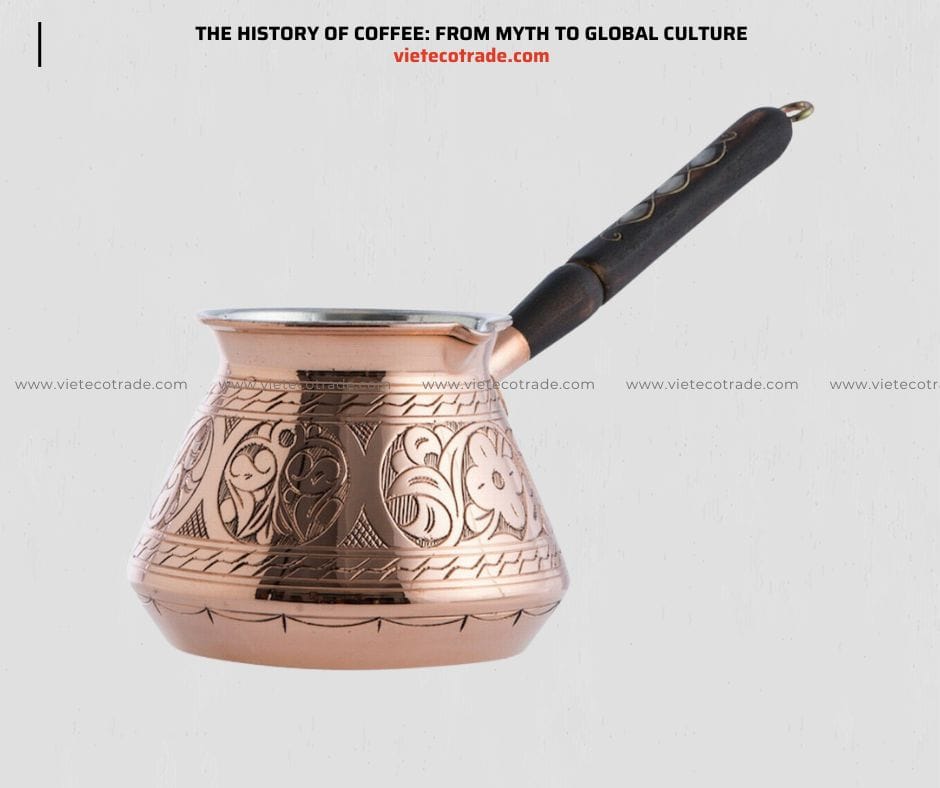
(Ibrik pot. Source: Collected)
- By the 16th century, the first coffeehouses, or “kaveh kanes,” emerged in Mecca, Cairo, and other major cities.
- Coffee spread from Yemen to the wider Middle East and North Africa.
- From the Middle East, coffee's aroma reached Egypt, Morocco, and Tunisia.
- Enchanting and novel coffeehouses sprang up in Cairo, Casablanca, Fez, and beyond.
- Coffee became central to Islamic culture, especially in gatherings and discussions at coffeehouses (qahveh khaneh).
- These venues were meeting places for scholars, artists, and merchants to exchange ideas and debate current issues.
- Coffee also played a role in religious rituals, helping monks stay awake during extended prayer sessions.
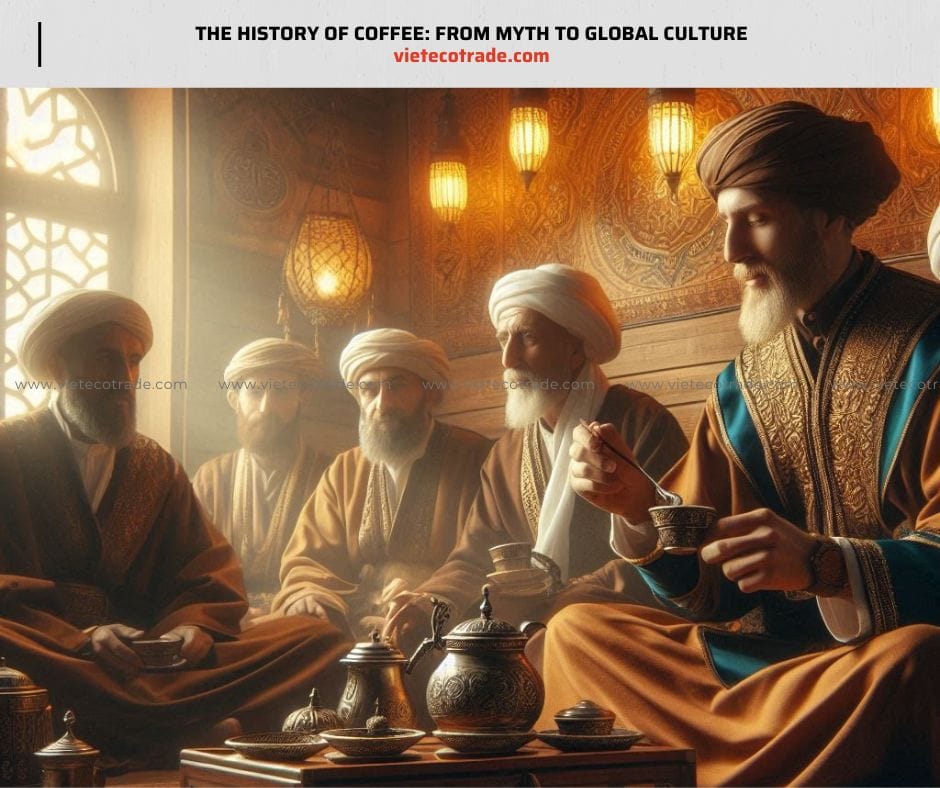
(Coffee becomes an integral part of Islamic culture. Source: AI)
III. Coffee in Europe
17th Century:
- Coffee was introduced to Europe by merchants and sailors, particularly through Venetian ships.
- The first European coffeehouse opened in Venice in 1645.
- In England, the first coffeehouse opened in Oxford in 1650, followed by one in London in 1652.
- Coffee quickly became a symbol of intellect and charm, favored by scientists, scholars, and traders.
- Coffeehouses like Lloyd’s in London became hubs of commerce and social activity.
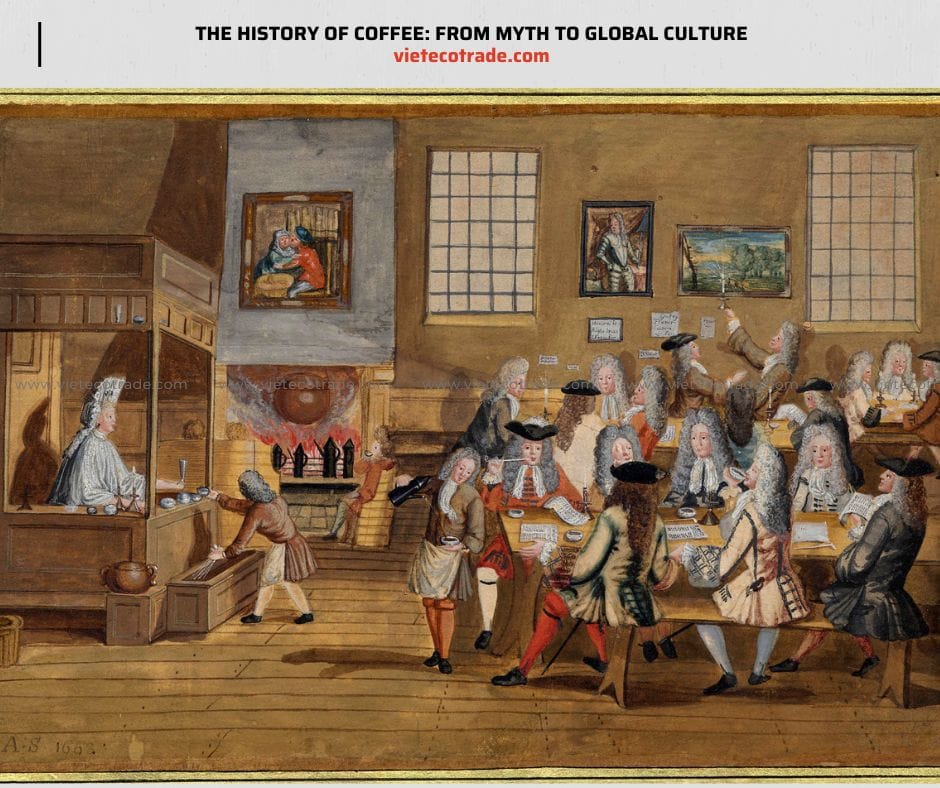
(Coffee quickly gained favor among scholars and merchants. Source: Collected)
18th Century:
- Coffeehouses flourished in Paris and London, serving as meeting spots for authors, artists, and intellectuals.
- Famous spots like Café de Flore and Les Deux Magots in Paris became gathering places for cultural icons like Voltaire, Rousseau, and Sartre.
- Coffeehouses were not only about the drink but also served as spaces for cultural and intellectual exchange.
IV. Coffee Reaches America
18th Century:
- European merchants introduced coffee to America.
- Coffee became an everyday part of American life, especially after tea became scarce and expensive during the American Revolutionary War.
- Coffeehouses in major cities like New York and Boston became centers of social and political activity.

(Coffee quickly became part of daily life in America. Source: Collected)
V. Modern Coffee
19th Century:
- Coffee evolved into a large-scale industry.
- Innovations in roasting and brewing methods accelerated the coffee sector’s growth.
- Renowned brands like Lavazza (founded in Italy in 1895) and Maxwell House (USA, 1892) emerged during this time.
20th Century:
- Iconic brands like Starbucks (established in 1971) revolutionized the coffee experience.
- Starbucks offered more than just coffee—it created a social space for people to meet and work comfortably.
- Other brands like Illy contributed to the global elevation of coffee quality and style.
Today:
- Coffee is more than a beverage—it’s a cultural and social experience.
- Coffee varieties, brewing styles, and origins are incredibly diverse. Specialty coffee movements emphasize sustainability and high quality.
- Modern coffee shops are cultural hubs, hosting music, art, and community events.
VI. Coffee in Vietnam
Origins:
- Coffee was first introduced to Vietnam in 1857 by French priest Alexandre Vallet.
- Initial planting took place in northern provinces like Ha Nam and Quang Tri.
- Due to unsuitable climate, the plants didn’t thrive in those regions.
- In 1875, coffee was successfully cultivated in Buon Ma Thuot (now a city in Dak Lak), where it flourished.
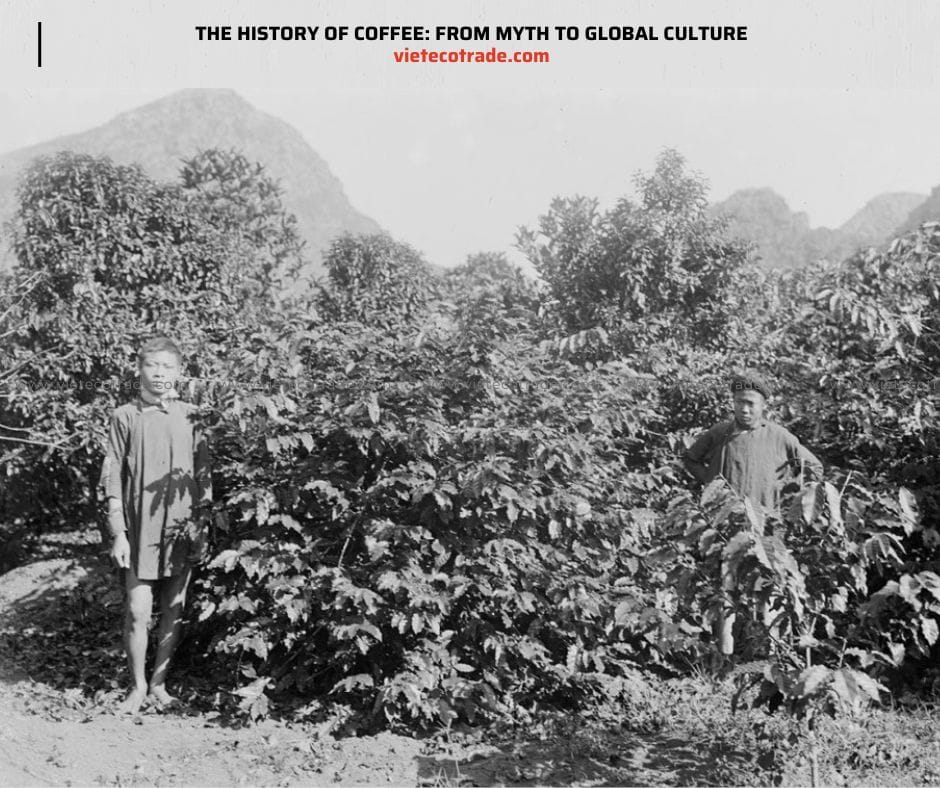
(Coffee on the Cressonnière plantation – 1898. Source: Collected)
Climate and Soil:
- Vietnam’s Central Highlands offer ideal conditions for Robusta coffee.
- Robusta was introduced from Indonesia in 1908 and quickly became the dominant variety due to its adaptability to the local climate and soil.

(Viet Duc Coffee Enterprise, photo taken in 1985. Source: Collected)
Development Journey:
- In the early 20th century, the French established large coffee plantations in the Central Highlands, notably Ea Tam plantation (now Ea Tam commune, Krong Nang district, Dak Lak), spanning up to 10,000 hectares.
- Robusta became the hallmark of Vietnamese coffee.
- After independence, Vietnam continued developing its coffee industry, focusing on both production and processing to enhance product value.
Coffee Achievements:
- Today, Vietnam is the world’s second-largest exporter of Robusta coffee, with exports exceeding 4 million tons annually.
- Vietnamese coffee is exported to over 180 countries and territories.
- The coffee processing and brewing industry in Vietnam plays a vital role in the economy and is a core part of urban culture.
- Unique and creative cafés thrive across major cities, showcasing the innovation in Vietnamese coffee-making.
- Iced milk coffee (cà phê sữa đá) and egg coffee (cà phê trứng) are signature Vietnamese drinks that captivate international visitors.

(Vietnam is the second-largest exporter of Robusta coffee in the world. Source: Collected)
From a wild forest fruit in Ethiopia to a cornerstone of modern life, coffee’s journey is a testament to cultural, religious, commercial, and creative exchange.
For Vietnam, coffee is not only a key crop but also a strategic agricultural symbol that has transformed the lives of millions of farmers and left a distinct cultural imprint on both local and global coffee lovers.
